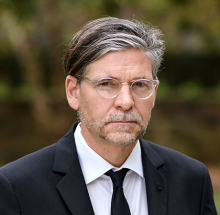You are here
What makes a fascist?
Nov 16,2022 - Last updated at Nov 16,2022
RINCETON — Almost exactly a century after Fascist leader Benito Mussolini’s March on Rome and ascent to the Italian premiership, a politician whose party descends from the original Fascists, Giorgia Meloni, has been appointed as Italy’s prime minister. Are we witnessing the return of lower-case fascism, a political phenomenon that has resonated far beyond Italy since 1922?
While there is nothing wrong with asking the question, throwing around the f-word too liberally could make it easier for far-right leaders to claim that since their critics always exaggerate, they also must be inflating the threat to democracy. Predictably, Meloni took great pains to distance herself from fascism in her maiden speech to parliament.
Yet, in considering the question of fascism today, one must remember that it has gone through different phases. While there are no fascist regimes in Europe or in the Americas today, there certainly are some parties, including governing ones, that could shift gradually in a more fascist direction.
Like any political belief system, fascism can be expected to evolve. Liberalism today is not what it was a hundred years ago, and conservatism, not to be confused with a reactionary or even strictly orthodox stance, finds its very meaning in carefully adapting to changing circumstances. What defines these systems are basic value commitments which should be recognisable over time. Liberals tell stories about freedom; conservatives dwell on the perils of rapid change and the limits of human reason in remaking society.
And fascists? For starters, they have all been nationalists who promised national rebirth, that is, to make the country great again. But not all nationalists are fascists, and many politicians promise some form of regeneration. What has distinguished fascists historically has been their glorification of violent struggle and martial valor. They have also promoted strict gender, national and racial hierarchies, with races in particular assumed to be locked in permanent and deadly conflict.
Today’s far right is undoubtedly in the business of re-establishing traditional gender roles and hierarchies, and it derives much of its energy from a relentless politics of exclusion: those alien to the nation must be kept out, lest they eventually come to replace the dominant in-group. But there is also a perceived danger from within: namely, the “liberal elites” and minorities who do not count as members of what far-right populists consider the “real people”.
Yet, this politics of exclusion does not necessarily go hand in hand with a glorification of violence and struggle as a means of providing men (it is usually men) with meaningful, disciplined, heroic lives. The latter feature, after all, emerged from the mass mobilisations of World War I, with Mussolini praising the “trenchocracy”: an aristocracy of brave warriors, as opposed to today’s weekend keyboard warriors, who had bonded in combat. Since the war had ended, Mussolini’s followers continued the violence at home. Likewise, Hitler’s rise is incomprehensible outside the context of the bloodthirsty right-wing militias that emerged in Germany in the early 1920s.
It is no accident that fascist regimes originated in countries that either lost (in Germany’s case) or felt like they had lost (Italy) a military conflict. Nor is it an accident that fascist regimes sooner or later went to war, unlike traditional authoritarian governments, which typically prefer not to mobilise their societies.
It is this all-pervasive atmosphere of violence that is missing today. Yes, veterans are over-represented within the more violent cohorts of the far right, and today’s far-right leaders do bring about what philosopher Kate Manne calls “trickle-down aggression”. But even where the far right has come to power, it has sought to demobilise citizens and make its peace with consumer capitalism.
So, should we just move on from the debate about fascism? That would be too hasty. As the distinguished historian Robert Paxton has shown, fascism comes in different phases. The current conventional wisdom holds that whereas damaged democracies in the twentieth century were usually killed off with violent coups, twenty-first-century democracies are more likely to fall to aspiring authoritarians who subtly manipulate laws over time to make their removal from office virtually impossible. Such autocratisation, an ugly, but necessary, neologism, is said to be more effective by dint of being harder to detect.
But this contrast overlooks the fact that fascism, notwithstanding its glorification of violence, often did not have to engage in violence to achieve its aims. Mussolini himself did not march on Rome. He arrived by sleeper car from Milan after Italy’s king and traditional elites had decided to hand him power, in the hope that he would sort out a political mess that nobody else appeared capable of managing.
Moreover, it is largely forgotten that Mussolini governed for years within the structures of Italy’s democracy, even including plenty of self-declared liberals in his cabinet. He practiced what today is often described as “autocratic legalism”. He followed the letter of the law while violating its spirit; or he enacted legislation in ways that were procedurally correct but that put the rule of men over the rule of law. To be sure, there was plenty of horrific violence as well, most infamously the murder of the socialist politician Giacomo Matteotti. But not until 1925 did Mussolini clearly become a dictator (whereas Hitler left little doubt about the all-out racist totalitarian rule he would establish from the very day he was appointed chancellor).
It is a failure of political judgment to conflate today’s far right and fascism. But it is imperative to watch closely how the far right develops over time. A shift to fascism, represented by open commitments to authoritarianism and the glorification of violence, could happen fast, but it might also happen quite slowly. In any case, the conduct of traditional elites is a key factor to watch. That is one of the least-understood lessons of the rise of Mussolini’s Fascism in twentieth-century Italy.
Jan-Werner Mueller, professor of Politics at Princeton University, is the author, most recently, of “Democracy Rules” (Farrar, Straus and Giroux, 2021; Allen Lane, 2021). Copyright: Project Syndicate, 2022.













